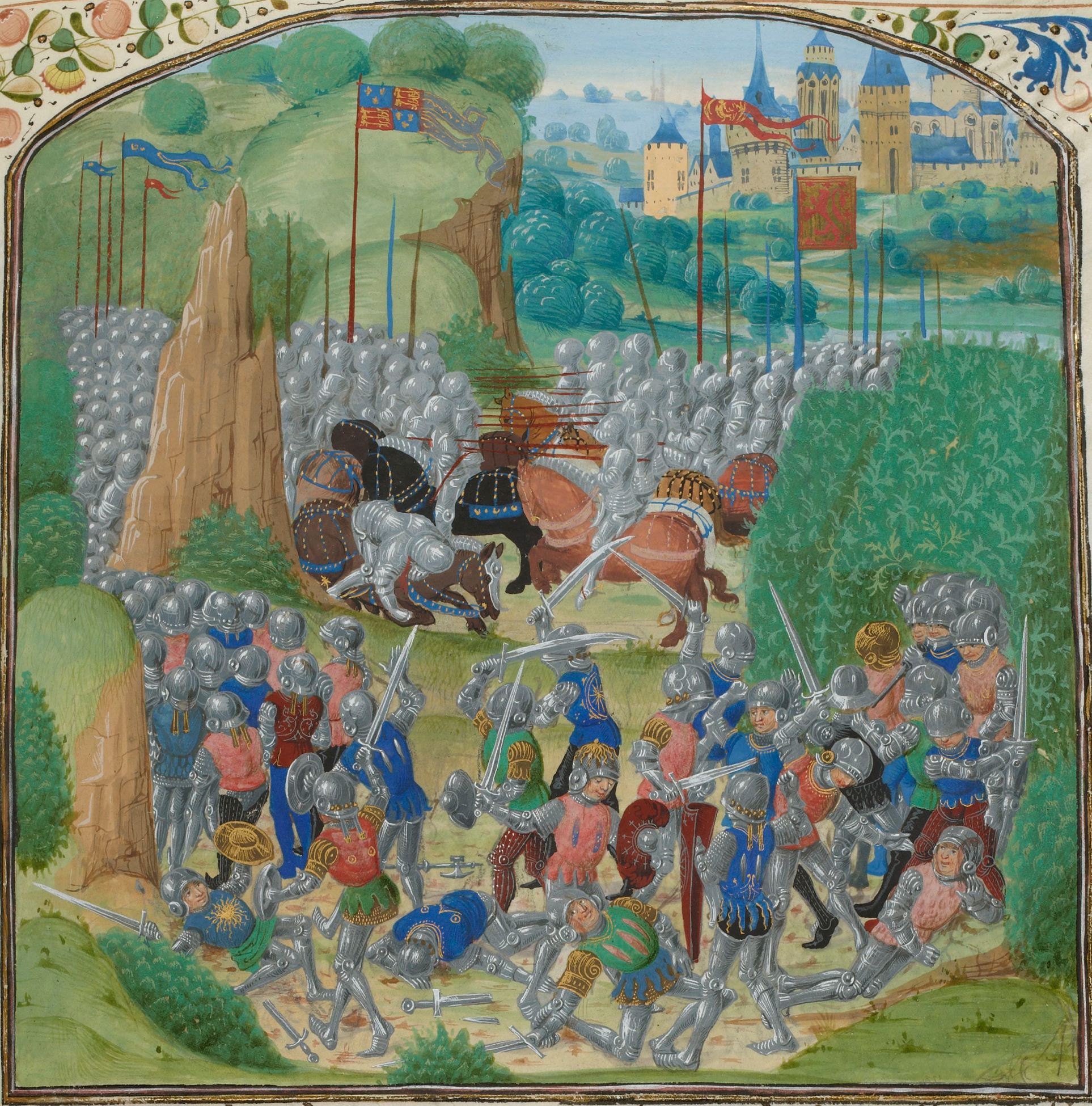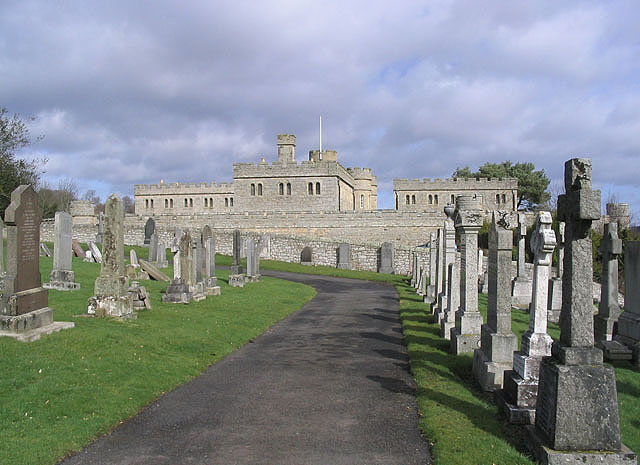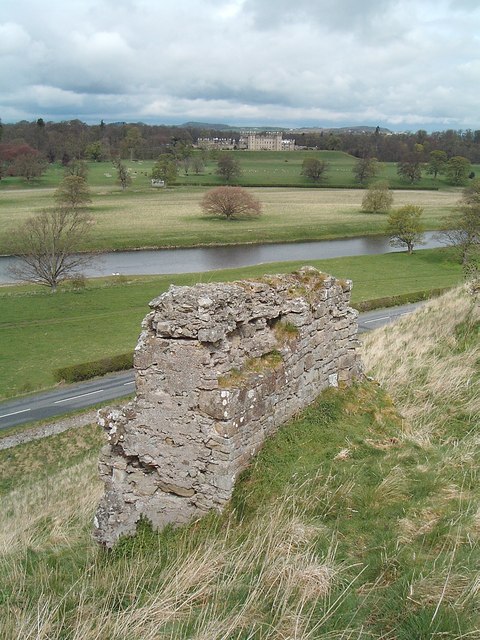|
Battle Of Fulhope Law
The Battle of Fulhope Law was a battle between Scottish raiders and the English garrisons of Jedburgh and Roxburgh castles in September 1400. The Scottish were routed and a large number of prisoners taken. Battle Robert de Umfraville Sir Robert de Umfraville KG, Lord of Redesdale ( 1363 – 1437) was a knight in late-medieval England who took part in the later stages of the Hundred Years' War, particularly against Scotland. The de Umfraville family had been influential i ..., led the English garrisons of Jedburgh and Roxburgh castles inflicting a defeat on a large Scots army at Fulhope Law after an attempted a raid. Prisoners included several border reivers, including the notorious fugitives Willie Barde and Adam, Lord of Gordon. Citations References * * {{DEFAULTSORT:Fulhope Law, battle of 1400 in England 1400 in Scotland Conflicts in 1400 ... [...More Info...] [...Related Items...] OR: [Wikipedia] [Google] [Baidu] |
Anglo-Scottish Wars
The Anglo-Scottish Wars comprise the various battles which continued to be fought between the Kingdom of England and the Kingdom of Scotland from the time of the Wars of Independence in the early 14th century through to the latter years of the 16th century. Although the Wars of Independence, in which Scotland twice resisted attempted conquest by Plantagenet kings of England, formally ended in the treaties of 1328 and 1357 respectively, relations between the two countries remained uneasy. Incursions by English kings into Scotland continued under Richard II and Henry IV and informal cross-border conflict remained endemic. Formal flashpoints on the border included places remaining under English occupation, such as Roxburgh Castle or the port of Berwick-upon-Tweed. Roxburgh was recaptured by the Scots in 1460 under Mary of Guelders after the death of James II in the same campaign. Similarly, they captured Berwick in 1461 in exchange for support to the Lancastrians. Berwick had c ... [...More Info...] [...Related Items...] OR: [Wikipedia] [Google] [Baidu] |
Scotland
Scotland (, ) is a country that is part of the United Kingdom. Covering the northern third of the island of Great Britain, mainland Scotland has a border with England to the southeast and is otherwise surrounded by the Atlantic Ocean to the north and west, the North Sea to the northeast and east, and the Irish Sea to the south. It also contains more than 790 islands, principally in the archipelagos of the Hebrides and the Northern Isles. Most of the population, including the capital Edinburgh, is concentrated in the Central Belt—the plain between the Scottish Highlands and the Southern Uplands—in the Scottish Lowlands. Scotland is divided into 32 administrative subdivisions or local authorities, known as council areas. Glasgow City is the largest council area in terms of population, with Highland being the largest in terms of area. Limited self-governing power, covering matters such as education, social services and roads and transportation, is devolved from the Scott ... [...More Info...] [...Related Items...] OR: [Wikipedia] [Google] [Baidu] |
Royal Arms Of England (1340-1367)
The royal arms of England are the arms first adopted in a fixed form at the start of the age of heraldry (circa 1200) as personal arms by the Plantagenet kings who ruled England from 1154. In the popular mind they have come to symbolise the nation of England, although according to heraldic usage nations do not bear arms, only persons and corporations do (however in Western Europe, especially in today's France, arms can be territorial civil emblems).: "The three golden lions upon a ground of red have certainly continued to be the royal and national arms of England." The blazon of the arms of Plantagenet is: ''Gules, three lions passant guardant in pale or armed and langued azure'',. signifying three identical gold lions (also known as leopards) with blue tongues and claws, walking past but facing the observer, arranged in a column on a red background. Although the tincture ''azure'' of tongue and claws is not cited in many blazons, they are historically a distinguishing feature ... [...More Info...] [...Related Items...] OR: [Wikipedia] [Google] [Baidu] |
Kingdom Of England
The Kingdom of England (, ) was a sovereign state on the island of Great Britain from 12 July 927, when it emerged from various Anglo-Saxon kingdoms, until 1 May 1707, when it united with Scotland to form the Kingdom of Great Britain. On 12 July 927, the various Anglo-Saxon kings swore their allegiance to Æthelstan of Wessex (), unifying most of modern England under a single king. In 1016, the kingdom became part of the North Sea Empire of Cnut the Great, a personal union between England, Denmark and Norway. The Norman conquest of England in 1066 led to the transfer of the English capital city and chief royal residence from the Anglo-Saxon one at Winchester to Westminster, and the City of London quickly established itself as England's largest and principal commercial centre. Histories of the kingdom of England from the Norman conquest of 1066 conventionally distinguish periods named after successive ruling dynasties: Norman (1066–1154), Plantagenet (1154–1485), Tudor ... [...More Info...] [...Related Items...] OR: [Wikipedia] [Google] [Baidu] |
Royal Arms Of The Kingdom Of Scotland
Royal may refer to: People * Royal (name), a list of people with either the surname or given name * A member of a royal family Places United States * Royal, Arkansas, an unincorporated community * Royal, Illinois, a village * Royal, Iowa, a city * Royal, Missouri, an unincorporated community * Royal, Nebraska, a village * Royal, Franklin County, North Carolina, an unincorporated area * Royal, Utah, a ghost town * Royal, West Virginia, an unincorporated community * Royal Gorge, on the Arkansas River in Colorado * Royal Township (other) Elsewhere * Mount Royal, a hill in Montreal, Canada * Royal Canal, Dublin, Ireland * Royal National Park, New South Wales, Australia Arts, entertainment, and media * ''Royal'' (Jesse Royal album), a 2021 reggae album * ''The Royal'', a British medical drama television series * ''The Royal Magazine'', a monthly British literary magazine published between 1898 and 1939 * ''Royal'' (Indian magazine), a men's lifestyle bimonthly * Royal Te ... [...More Info...] [...Related Items...] OR: [Wikipedia] [Google] [Baidu] |
Kingdom Of Scotland
The Kingdom of Scotland (; , ) was a sovereign state in northwest Europe traditionally said to have been founded in 843. Its territories expanded and shrank, but it came to occupy the northern third of the island of Great Britain, sharing a land border to the south with England. It suffered many invasions by the English, but under Robert the Bruce it fought a successful War of Independence and remained an independent state throughout the late Middle Ages. Following the annexation of the Hebrides and the Northern Isles from Norway in 1266 and 1472 respectively, and the final capture of the Royal Burgh of Berwick by England in 1482, the territory of the Kingdom of Scotland corresponded to that of modern-day Scotland, bounded by the North Sea to the east, the Atlantic Ocean to the north and west, and the North Channel and Irish Sea to the southwest. In 1603, James VI of Scotland became King of England, joining Scotland with England in a personal union. In 1707, during the reign ... [...More Info...] [...Related Items...] OR: [Wikipedia] [Google] [Baidu] |
Sir Robert Umfraville
Sir Robert de Umfraville KG, Lord of Redesdale ( 1363 – 1437) was a knight in late-medieval England who took part in the later stages of the Hundred Years' War, particularly against Scotland. The de Umfraville family had been influential in northeast England for centuries and also held major estates in Yorkshire. His ancestors were mormaers of Angus, and his nephew married into the Percies, a powerful local marcher family with whom de Umfraville was closely associated. Much of Sir Robert's career continued on the same path as his ancestors, being primarily focused on defending the border with Scotland, which had been in a state of near-permanent warfare since the late thirteenth century. Robert de Umfraville fought under three English kings. Beginning his career under Richard II, he probably fought at the Battle of Otterburn with Henry "Hotspur" Percy in 1388. After Richard was deposed by Henry IV in 1399, de Umfraville loyally served the new Lancastrian regime, waging ... [...More Info...] [...Related Items...] OR: [Wikipedia] [Google] [Baidu] |
Jedburgh Castle
Jedburgh Castle was a castle at Jedburgh in Scotland. It was fought over during the Wars of Scottish Independence, and was demolished by the Scots commanded by Sir James Douglas of Balvenie in 1409. The site of the original castle was used to build the reform prison based on John Howard (prison reformer) system, the construction of which started in 1820. Jedburgh Castle Jail In 1823 a jail was built on the site to designs by Archibald Elliot. It was modified in 1847 by Thomas Brown. This closed in 1868. The building was restored to an 1820s appearance in 1968 by Aitken and Turnbull. It opened to the public as Jedburgh Castle Jail and Museum. The museum features local history displays. On the Thursday after Shrove Tuesday, the town has played a Ba Game since 1704. The uppies team use the castle to record their victories. See also *List of places in the Scottish Borders *List of places in Scotland This list of places in Scotland is a complete collection of lists of places in ... [...More Info...] [...Related Items...] OR: [Wikipedia] [Google] [Baidu] |
Roxburgh Castle
Roxburgh Castle is a ruined royal castle that overlooks the junction of the rivers Tweed and Teviot, in the Borders region of Scotland. The town and castle developed into the royal burgh of Roxburgh, which the Scots destroyed along with the castle after capturing it in 1460. Today the ruins stand in the grounds of Floors Castle, the seat of the Duke of Roxburghe, across the river from Kelso. History Tradition states that King David I founded the castle; it is first recorded in c.1128 during his reign. In 1174, it was surrendered to England after the capture of William I at Alnwick, and was often in English hands thereafter. The Scots made many attempts to regain the fortress. King Edward I of England imprisoned Mary Bruce in a cage hung outside the castle from 1306 to 1310. On 19 February 1314, it was retaken by Sir James Douglas (the "Black Douglas"), in a night attack. His men clothed in black cloaks were apparently mistaken for cattle. They then used rope and board ladders ... [...More Info...] [...Related Items...] OR: [Wikipedia] [Google] [Baidu] |
Robert De Umfraville
Sir Robert de Umfraville KG, Lord of Redesdale ( 1363 – 1437) was a knight in late-medieval England who took part in the later stages of the Hundred Years' War, particularly against Scotland. The de Umfraville family had been influential in northeast England for centuries and also held major estates in Yorkshire. His ancestors were mormaers of Angus, and his nephew married into the Percies, a powerful local marcher family with whom de Umfraville was closely associated. Much of Sir Robert's career continued on the same path as his ancestors, being primarily focused on defending the border with Scotland, which had been in a state of near-permanent warfare since the late thirteenth century. Robert de Umfraville fought under three English kings. Beginning his career under Richard II, he probably fought at the Battle of Otterburn with Henry "Hotspur" Percy in 1388. After Richard was deposed by Henry IV in 1399, de Umfraville loyally served the new Lancastrian regime, waging ... [...More Info...] [...Related Items...] OR: [Wikipedia] [Google] [Baidu] |
1400 In England
Events from the 1400s in England. Incumbents *Monarch – Henry IV Events * 1400 ** January – Henry IV quells the Epiphany Rising and executes the Earls of Kent, Huntingdon and Salisbury and the Baron le Despencer for their attempt to have Richard II restored as King. ** 14 February – death of the deposed Richard II in Pontefract Castle. His body is displayed in old St Paul's Cathedral, London, on 17 February before initial burial in Kings Langley Church on 6 March. ** February – Henry Percy (Hotspur) leads English incursions into Scotland. ** 23 May – Newcastle upon Tyne is granted a new royal charter, creating it a county corporate. ** 25 July – English invasion of Scotland (1400): Henry IV leads his army north from a muster at York. ** Mid-August – the English army camp at Leith near Edinburgh but fail to besiege Edinburgh Castle. ** 16 September – Owain Glyndŵr is proclaimed Prince of Wales by his followers and begins attacking English strongholds in nort ... [...More Info...] [...Related Items...] OR: [Wikipedia] [Google] [Baidu] |








